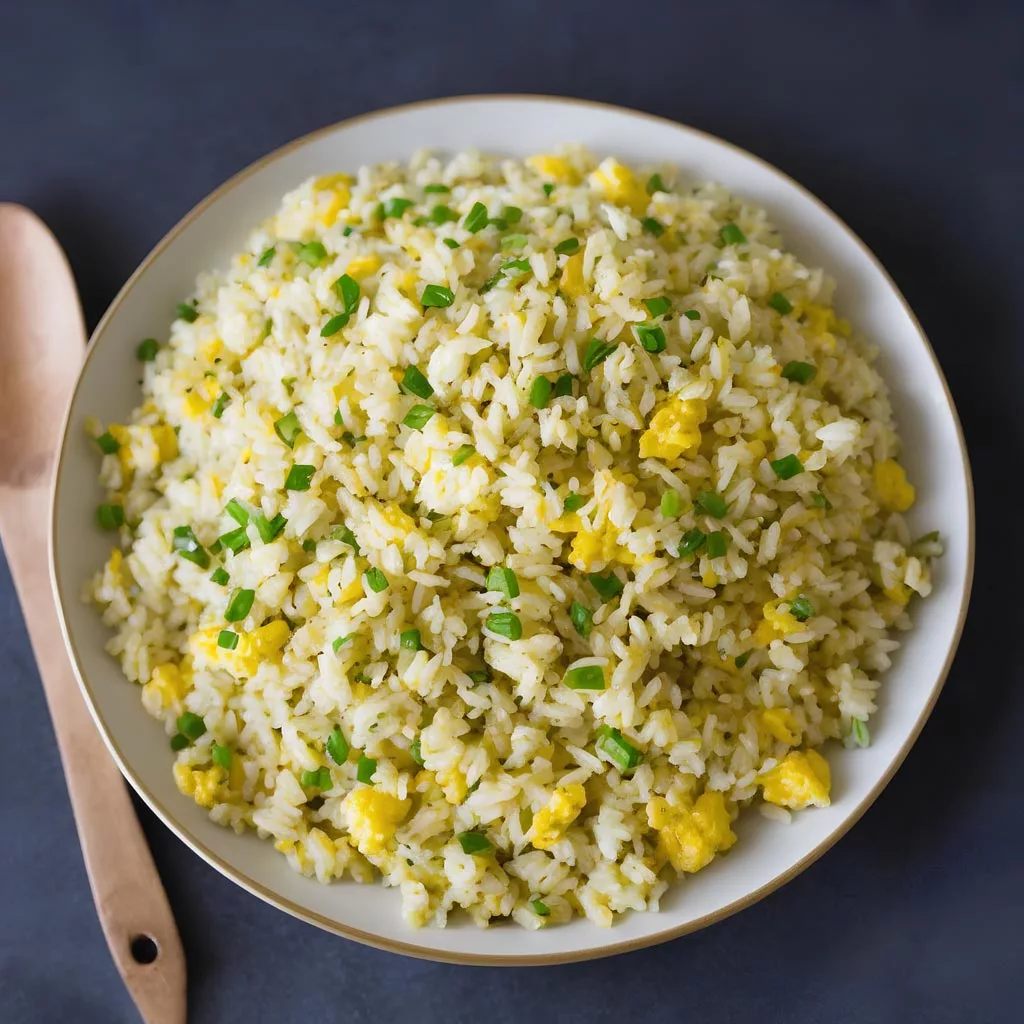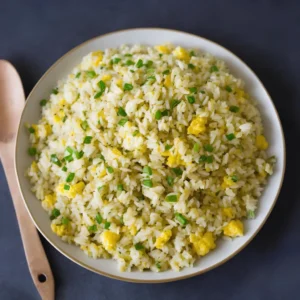
Who doesn’t love a good plate of egg fried rice? It’s a classic comfort food that satisfies cravings and brings back memories of cozy evenings with family or friends.
This recipe is not only delicious but also incredibly easy to make, perfect for beginners in the kitchen or anyone looking for a quick and tasty meal. Originating from Chinese cuisine, egg fried rice has become a beloved dish worldwide for its simplicity and versatility.
The beauty of egg fried rice lies in its humble yet flavorful ingredients. Cooked rice, shallots, garlic, eggs, soy sauce, and spring onions come together harmoniously to create a dish that bursts with savory goodness.
Each ingredient plays a crucial role in enhancing the overall taste and texture of the dish. From the fragrant aroma of sautéed shallots and garlic to the richness of scrambled eggs and the umami kick of soy sauce, every bite is a delightful experience.
While this recipe may seem straightforward, mastering the art of egg fried rice requires a bit of finesse. Achieving the perfect balance of flavors and textures involves proper timing and technique. But fear not, as I’ll guide you through each step to ensure your egg fried rice turns out just like the ones you enjoy at your favorite restaurant.
Expert Tip: For extra flavor, consider adding a splash of sesame oil or oyster sauce to the fried rice during the final stages of cooking.
Rice: Cooked and cooled, this forms the base of the dish, providing a hearty and filling foundation.
Shallots: Finely chopped shallots add a sweet and aromatic flavor to the dish, complementing the savory notes of the other ingredients.
Garlic: Minced garlic lends a robust and slightly pungent taste, enhancing the overall depth of flavor in the fried rice.
Eggs: Beaten with salt and pepper, eggs contribute richness and protein to the dish while creating a fluffy and satisfying texture.
Oil: Used for frying, oil helps to cook the ingredients evenly and prevents them from sticking to the pan.
Soy Sauce: Light soy sauce adds a salty and umami-rich flavor to the fried rice, giving it that signature Asian-inspired taste.
Spring Onions: Thinly sliced spring onions not only provide a pop of color but also add a fresh and slightly pungent flavor to the dish, finishing it off with a hint of brightness.
Expert Tip: Use high heat when cooking the ingredients to achieve that classic wok hei, or “breath of the wok,” flavor.
Expert Tip: Ensure that the cooked rice is cooled before using it in the recipe. This helps to prevent the rice from becoming sticky and clumping together during stir-frying.
Cooking egg fried rice typically takes around 15-20 minutes from start to finish. The preparation time may vary depending on factors such as the type of rice used and the cooking equipment available.
Yes, you can use other types of rice such as jasmine rice, basmati rice, or brown rice. However, keep in mind that the texture and flavor of the fried rice may vary slightly depending on the type of rice used.
Absolutely! Feel free to customize this recipe to suit your taste preferences. You can add in additional vegetables, protein sources, or seasonings to create your own unique variation of egg fried rice.
While using a wok is traditional for making fried rice, you can also use a large frying pan or skillet if you don’t have a wok available. The key is to ensure that the pan is large enough to accommodate all the ingredients and allows for even cooking.
Yes, you can make egg fried rice ahead of time and store it in an airtight container in the refrigerator for up to 2-3 days. Simply reheat the fried rice in a pan or microwave before serving, adding a splash of water or broth if needed to prevent it from drying out.
Here are some more recipes for you to enjoy! If you my recipes don’t forget to rate and leave a comment.
If you have any recipe suggestions, please do not hesitate to ask me. A great way to stay in contact with me is through Instagram, Facebook, Twitter and YouTube. Don’t forget to tag me @CookwithNabeela in your recipe photos!

Subscribe now to receive my latest recipes directly in your inbox. Stay up-to-date and never miss out!

I love to cook! I want to share with you my favourite, delicious family-friendly recipes. I want to inspire you to create fantastic food for your family every day.
Add your first comment to this post